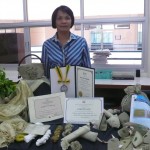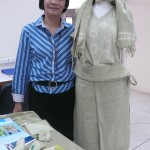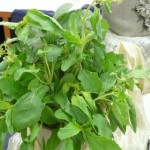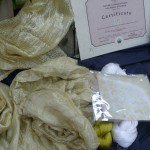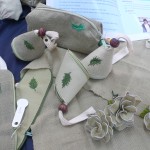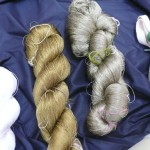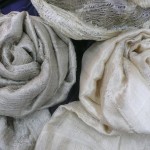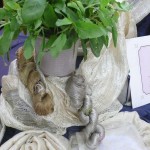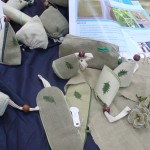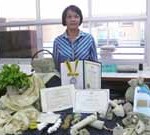สกัดสีกะเพราย้อมผ้า
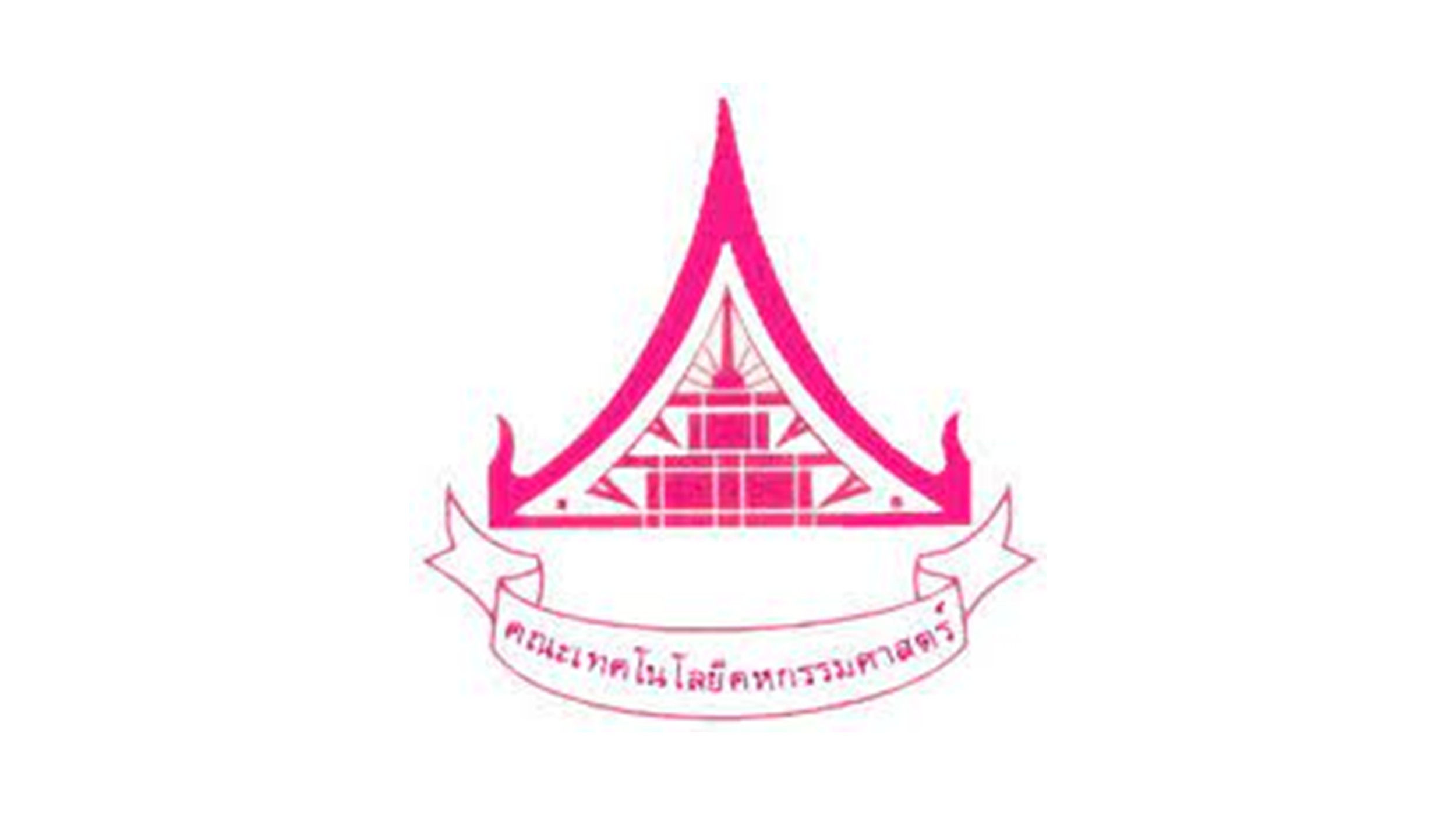
นศ.มทร.ธัญบุรีโชว์ปลาร้าก้อน
14 สิงหาคม 2012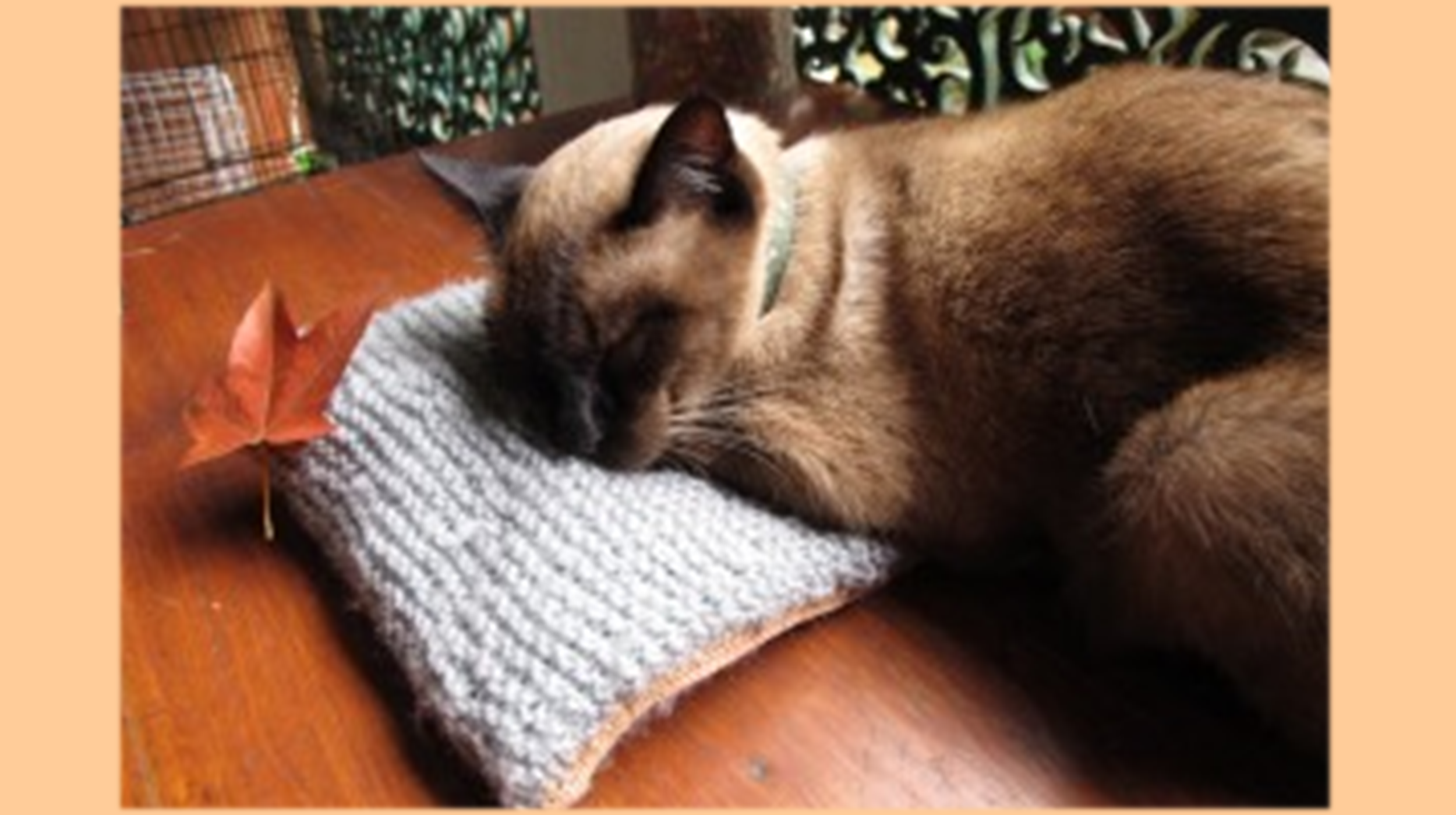
เครื่องแยกฝุ่นทรายแมว ฝีมือ มทร.ธัญบุรี
15 สิงหาคม 2012เรารู้จักกะเพรา ว่า เป็นพืชผักจำพวกเครื่องเทศที่ใช้ใบสดใบอ่อนในการประกอบอาหาร ช่วยให้อาหารมีกลิ่นหอม ใบกะเพราใช้เป็นผักชูรส เช่น ผัดเผ็ด ผัดกะเพรา ใส่หอยนึ่ง ฯลฯ กระเพรายังมีประโยชน์ทางด้านเป็นสมุนไพร ทำให้เลือดลมดี แต่ใครจะรู้ว่า กระเพรายังสามารถนำไปย้อมผ้า และเกิดสีตามธรรมชาติได้อย่างสวยงาม
การค้นพบนี้ เป็นผลงานของ ดร.เฉลียว หมัดอิ้ว จากคณะเทคโนโลยีคหกรรมศาสตร์ มหาวิทยาลัยเทคโนโลยีราชมงคลธัญบุรี อีกทั้งยังสามารถคว้ารางวัลในสาขา Textile/Chemistry โดยคว้ามาได้4 รางวัล คือ รางวัลเหรียญเงิน (KIWIE 2012 Silver Medal) จาก KIWIE 2012,รางวัลเหรียญทอง (TIIIA Gold Medal) จาก Taiwan Invention & Innovation Industry Association ,ประกาศนียบัตร (EWI Certificate) จาก European Women Inventor Association และประกาศนียบัตร (SOIP Certificate) จาก State Office of Industrial Property of the Republic of Macedonia ในงาน Korea International Women’s Invention Exposition 2012 ประเทศเกาหลีใต้
ซึ่งผลงานนี้ ดร.เฉลียวเปิดเผยว่า แรงบันดาลใจที่ทำให้สนใจพระเพรา จนกระทั่งเกิดการศึกษาอย่างจริงจังและประสบความสำเร็จนั้นเกิดจาก ในชีวิตประจำวัน ได้เห็นว่า กระเพราเป็นพืชที่ประเทศไทยนิยมบริโภค แทบจะทุกครัวเรือน เป็นพืชที่ปลูกง่าย และสามารถปลูกได้ทุกฤดูกาล ดังนั้นตนจึงมองว่าหากนำกระเพราะมาแปรรูปหรือทำประโยชน์ด้านอื่น เมื่อเกิดผลสำเร็จ ก็จะไม่มีการขาดแคลน เมื่อมีความต้องการมากๆ ซึ่งนั่นเป็นที่มาให้ ดร.เฉลียวเลือกที่จะศึกษา และนำกระเพรามาทำเป็นสีธรรมชาติ ใช้ย้อมผ้าฝ้าย ผ้าไหม จนกระทั่งประสบความสำเร็จดังที่ได้กล่าว
ดร.เฉลียวเล่าอีกว่า การใช้กระเพรามาสกัดเป็นสีย้อมผ้าในสิ่งทอสามารถใช้ได้ทั้งส่วนของ ต้น ใบ ยกเว้นรากเท่านั้น น้ำที่สกัดได้ จะได้สีโทนสีเขียว หลายเฉดแตกต่างกัน ไปตามลักษณะ ของใบ และต้นของกระเพราที่นำไปสกัดสามารถย้อมได้ทั้งผ้าไหม ผ้าฝ้าย ย้อมได้ทั้งผ้าที่ทอแล้ว และเส้นใย สีที่ได้จะให้สีตามธรรมชาติ ของกระเพา เมื่อนำไปทดสอบประสิทธิภาพด้วยการซัก ความทนต่อแดด ต่อการซัก และการขัดถูก็พบว่า อยู่ในระดับดี ที่สำคัญสีที่สกัดและการย้อมสีจากการสกัดกระเพรายังไม่ทำลายสิ่งแวดล้อมอีกด้วย แล้วยังเพิ่มมูลค่า กระเพราในเชิงอุตสาหกรรม
นอกจากนี้ ดร.เฉลียวยังได้บอกอีกว่า การศึกษาการย้อมผ้าด้วยกระเพราไม่ได้หยุดเพียงเท่านี้เพราะอย่างที่ทราบว่า กระเพราะมีคุณสมบัติในการต้านแบคทีเรีย ดังนั้นขั้นตอนต่อไปตนสนใจที่จะศึกษา และค้นคว้าให้ผ้า หรือเส้นใยที่ย้อมด้วยกระเพราสามารถต่อต้านแบคทีเรียได้อีกด้วย
มณีรัตน์ ปัญญพงษ์
กองประชาสัมพันธ์ราชมงคลธัญบุรี
RMUTT Researcher Extracts Natural Dye from Holy Basil
Holy basil, a common ingredient in Thai cuisine, is well-known for its aromatic fragrance and medicinal properties. It grows easily all year round and is found in nearly every Thai kitchen. Little did anyone know that holy basil can also be used to produce beautiful natural dyes, until Dr. Chaliao Mud-iew of RMUTT’s Faculty of Home Economics Technology made a ground-breaking discovery.
“Holy basil is so abundant in Thailand, which makes it an ideal candidate for processing into other types of raw materials. Its wide availability means that we will never run out of it,” Dr. Chaliao says. “For natural dye extraction, the entire plant except the roots can be used, and the colors we get after processing the plant are various shades of green,” she adds. The dye color is suitable for both silk and cotton, either in thread form or as finished fabric.
The dyed fabric underwent an extensive quality test, by washing, sun-drying and scrubbing, and the results were satisfactory. More importantly, the natural dye color is environmental friendly, leaving no harmful residue in the environment. This, says Dr. Chaliao, adds value to holy basil in terms of industrial production.
Future development will focus on using the dye color from holy basil to produce bacteria-free fabric and threads, as holy basil has natural anti-bacterial property, she adds.
Dr. Chaliao’s discovery has garnered several international awards, including a silver medal at Korean International Women’s Invention Exposition (KIWIE) 2012, gold medal from Taiwan Invention & Innovation Industry Association (TIIIA) and two certificates of recognition (EWI Certificate) from European Women Inventor Association and State Office of Industrial Property of the Republic of Macedonia.


